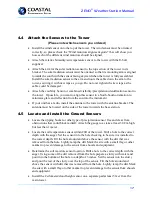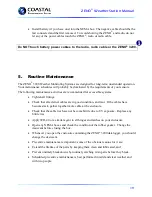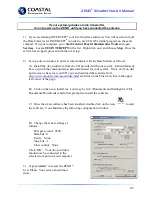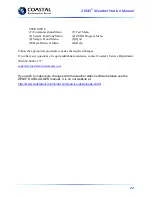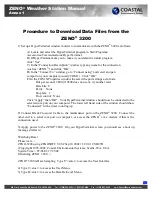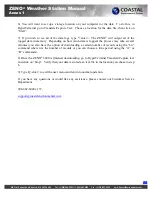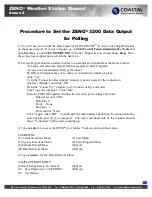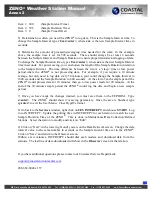
ZENO
®
Weather Station Manual
11
•
Telephone dial-up
•
TCP/IP address
•
GPRS
•
CDMA
•
Cell phone
•
Cable (copper or fiber optic)
•
Satellite
•
Special forms
More details on these will be in the specific device manual that you have ordered.
3.
How and Where to place a Weather Station and
the Sensors:
The site should be representative of the general area and be away from obstructions such as
buildings and trees where possible
1
,
2
3.1
Wind Speed and Direction
.
Wind sensors should be located over open level ground where possible. The wind sensor should
be a distance of at least ten times the height of nearby buildings, trees, or other obstructions (so if
a building is 10 meters high – the weather station would ideally be 100 meters away). For poles
and towers you should be at least 2 times the diameter away.
There are two recommended heights, but you may have reason to select another. The two
standards are 3 meters and 10 meters.
3.2
Temperature and Relative Humidity
The sensor should be housed in a naturally ventilated radiation shield. For the most accurate
measurement under ALL conditions you should consider a motor aspirated shield, however they
are not required for most uses. Avoid where possible large heat sources or shade. The standard
height is 1.25 to 2.0 meters.
3.3
Precipitation
Tipping buckets, weighing gauges or other precipitation measurement sensors should be a
minimum of 30 cm off the ground. It is not ideal to attach them via a support arm to the tower but
1
NWS & NOAA (2010). Operations and Services Surface Observing Program (Land) NWSPD
10-13. Also NWS/NOAA website for Proper Weather Station Siting:
2
WMO (1983). Guide to Meteorological Instruments and Methods of Observation. World
Meteorological Organization No. 8, 5th edition, Geneva Switzerland.

















